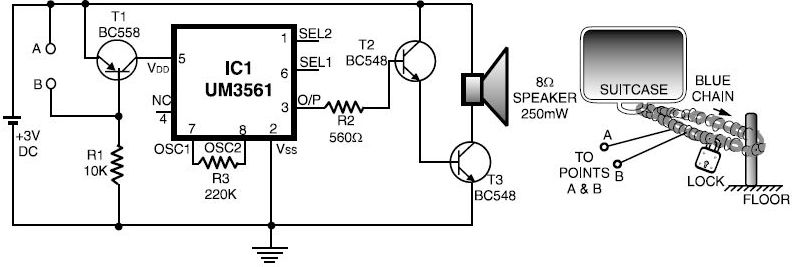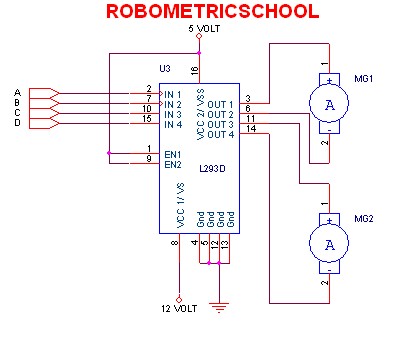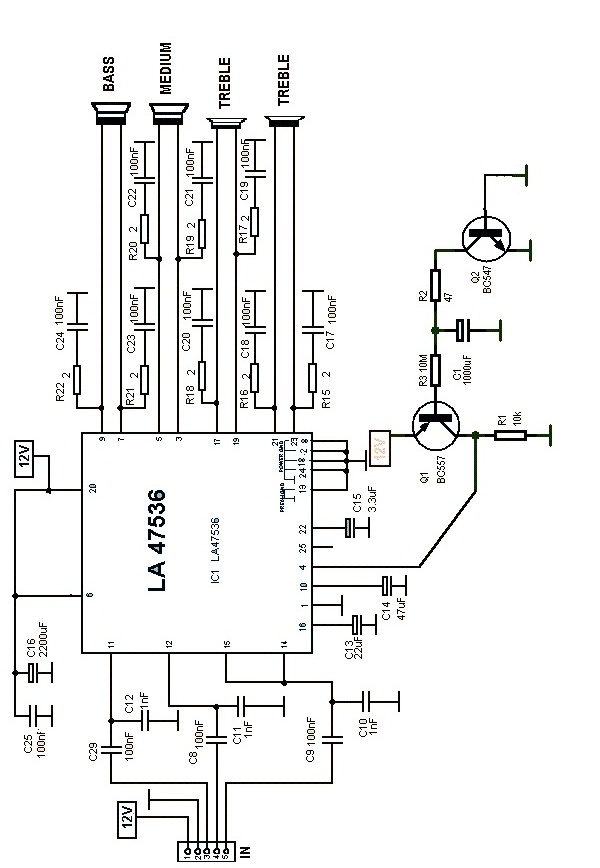
Luggage Bike Security Alarm Circuit

This luggage or bike alarm can be utilized while traveling by train or bus. Typically, luggage is secured using a chain-and-lock arrangement; however, there are still vulnerabilities.
The luggage or bike alarm system is designed to enhance the security of personal belongings during travel. It operates by integrating a motion sensor with an audible alarm. When the luggage or bike is tampered with or moved unexpectedly, the motion sensor detects the disturbance and triggers a loud alarm, alerting the owner and deterring potential thieves.
The system typically consists of the following components: a microcontroller, a motion sensor (such as a passive infrared sensor or an accelerometer), a loudspeaker or buzzer for the alarm, a power supply (usually batteries), and a locking mechanism that can be integrated with the existing chain-and-lock setup.
The microcontroller serves as the central processing unit, receiving input from the motion sensor and controlling the alarm output. The motion sensor is strategically placed on the luggage or bike to maximize its sensitivity to any unauthorized movement. The alarm can be set to various sensitivity levels, allowing users to customize the response based on their environment.
Power management is crucial for this device, especially for portable applications. The use of low-power components and sleep modes can extend battery life, making the alarm more practical for long journeys. Additionally, some systems may include features such as remote notifications via a smartphone app, allowing users to monitor the security of their belongings in real-time.
In conclusion, this luggage or bike alarm provides an effective solution for travelers seeking to protect their possessions. Its integration with traditional locking methods enhances security, while its alarm functionality offers peace of mind during transit.This luggage or bike alarm can be used while travelling by trains or bus and we generally lock our luggage using a chain-and-lock arrangement. But, still w.. 🔗 External reference
The luggage or bike alarm system is designed to enhance the security of personal belongings during travel. It operates by integrating a motion sensor with an audible alarm. When the luggage or bike is tampered with or moved unexpectedly, the motion sensor detects the disturbance and triggers a loud alarm, alerting the owner and deterring potential thieves.
The system typically consists of the following components: a microcontroller, a motion sensor (such as a passive infrared sensor or an accelerometer), a loudspeaker or buzzer for the alarm, a power supply (usually batteries), and a locking mechanism that can be integrated with the existing chain-and-lock setup.
The microcontroller serves as the central processing unit, receiving input from the motion sensor and controlling the alarm output. The motion sensor is strategically placed on the luggage or bike to maximize its sensitivity to any unauthorized movement. The alarm can be set to various sensitivity levels, allowing users to customize the response based on their environment.
Power management is crucial for this device, especially for portable applications. The use of low-power components and sleep modes can extend battery life, making the alarm more practical for long journeys. Additionally, some systems may include features such as remote notifications via a smartphone app, allowing users to monitor the security of their belongings in real-time.
In conclusion, this luggage or bike alarm provides an effective solution for travelers seeking to protect their possessions. Its integration with traditional locking methods enhances security, while its alarm functionality offers peace of mind during transit.This luggage or bike alarm can be used while travelling by trains or bus and we generally lock our luggage using a chain-and-lock arrangement. But, still w.. 🔗 External reference





